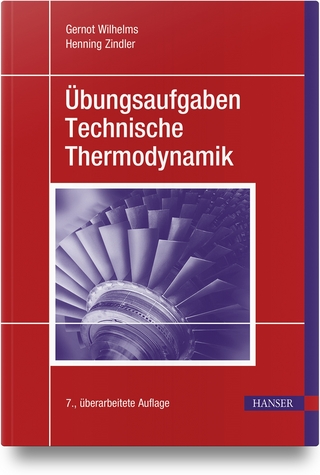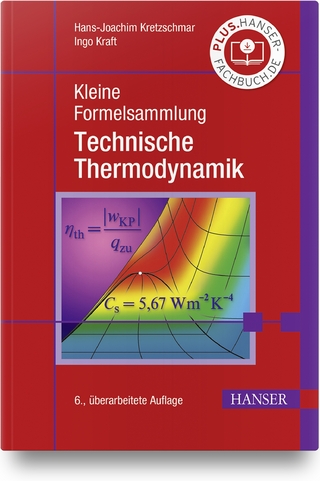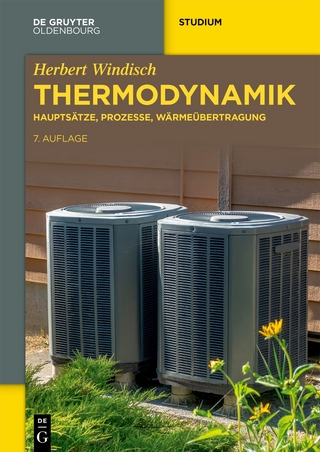
Combined Cycle Driven Efficiency for Next Generation Nuclear Power Plants
Springer International Publishing (Verlag)
978-3-319-70550-7 (ISBN)
Bahman Zohuri is currently at the Galaxy Advanced Engineering, Inc. a consulting company that he stared himself in 1991 when he left both semiconductor and defense industries after many years working as a chief scientist. He is also presently holding position of Research Professor at department of Electrical and Computer at University of New Mexico. After graduating from University of Illinois in field of Physics and Applied Mathematics, he joined Westinghouse Electric Corporation where he performed thermal hydraulic analysis and natural circulation for Inherent Shutdown Heat Removal System (ISHRS) in the core of a Liquid Metal Fast Breeder Reactor (LMFBR) as a secondary fully inherent shut system for secondary loop heat exchange. All these designs were, used for Nuclear Safety and Reliability Engineering for Self-Actuated Shutdown System. He designed the Mercury Heat Pipe and Electromagnetic Pumps for Large Pool Concepts of LMFBR for heat rejection purpose for this reactor around 1978 where he received a patent for it. He later on was transferred to defense division of Westinghouse where he was responsible for the dynamic analysis and method of launch and handling of MX missile out of canister. He later on was consultant at Sandia National Laboratory after leaving United States Navy. Dr. Zohuri earned his Bachelor's and Master's degrees in Physics from the University of Illinois and his second Master degree in Mechanical Engineering as well as his doctorate in Nuclear Engineering from University of New Mexico. He has been, awarded three patents, and has published 26 textbooks and numerous other journal publications. He did few years of consulting under his company Galaxy Advanced Engineering with Sandia National Laboratories (SNL), where he was supporting development of operational hazard assessments for the Air Force Safety Center (AFSC) in connection with other interest parties. Intended use of the results was their eventual inclusion in Air Force Instructions (AFIs) specifically issued for Directed Energy Weapons (DEW) operational safety. He completed the first version of a comprehensive library of detailed laser tools for Airborne Laser (ABL), Advanced Tactical Laser (ATL), Tactical High Energy Laser (THEL), Mobile/Tactical High Energy Laser (M-THEL), etc. He also was responsible on SDI computer programs involved with Battle Management C3 and artificial Intelligent, and autonomous system. He is author few publications and holds various patents such as Laser Activated Radioactive Decay and Results of Thru-Bulkhead Initiation.Recently he has published over 23 other books with Springer Publishing Company and CRC and Francis Taylor on different subjects and they all can be found under his name on Amazon. Dr. Patrick McDaniel is currently adjunct and research professor at Department of Chemical and Nuclear Engineering, University of New Mexico. Patrick began his career as a pilot and maintenance officer in the USAF. After leaving the Air Force and obtaining his doctorate at Purdue University, he worked at Sandia National Laboratories in fast reactor safety, integral cross section measurements, nuclear weapons vulnerability, space nuclear power, and nuclear propulsion. He left Sandia to become the technical leader for Phillips Laboratory's has (became part of Air Force Research Laboratory) Satellite Assessment Center. After 10 years at PL/AFRL, he returned to Sandia to lead and manage DARPA's Stimulated Isomer Energy Release project, a $10M per year effort. While at Sandia, he worked on the Yucca Mountain Project and DARPA's classified UER-X program. Having taught at the University of New Mexico in the Graduate Nuclear engineering program for 25 years, when he retired from Sandia in early 2009, he joined the faculty at the University of New Mexico full time. He has worked on multiple classified and unclassified projects in the application of nuclear engineering to high energy systems. Dr. McDaniel holds PhD
Definitions and Basic Principles.- Properties of Pure Substances.- Thermodynamic Cycles.- Heat Transport System Thermal Hydraulics.- Energy Resources and the Role of Nuclear Energy.- New Approach to Energy Conversion Technology.- Gas Turbine Working Principals.- Open Air Brayton Gas Power Cycle.- Modeling the Nuclear Air-Brayton Combined Cycle.- Modeling the Nuclear Air-Brayton Recuperated Cycle.- Modelica Programming A New Approach In Modeling Of CHP.- Nuclear Systems Acronyms.- Appendix A: Table and Graphs Compilations.- Appendix B: Nuclear Power Plants.- Index.
| Erscheinungsdatum | 19.01.2018 |
|---|---|
| Zusatzinfo | XX, 395 p. 183 illus., 102 illus. in color. |
| Verlagsort | Cham |
| Sprache | englisch |
| Maße | 155 x 235 mm |
| Gewicht | 783 g |
| Themenwelt | Naturwissenschaften ► Physik / Astronomie ► Thermodynamik |
| Technik ► Elektrotechnik / Energietechnik | |
| Schlagworte | Combined Cycle Power Plant • Nuclear Air-Brayton system • nuclear energy • Nuclear Engineering • Nuclear thermodynamics |
| ISBN-10 | 3-319-70550-4 / 3319705504 |
| ISBN-13 | 978-3-319-70550-7 / 9783319705507 |
| Zustand | Neuware |
| Haben Sie eine Frage zum Produkt? |
aus dem Bereich


